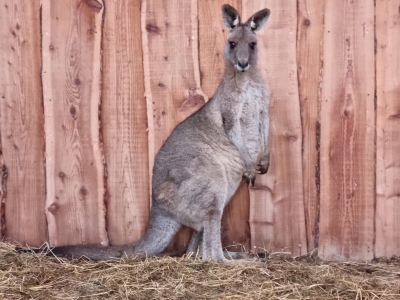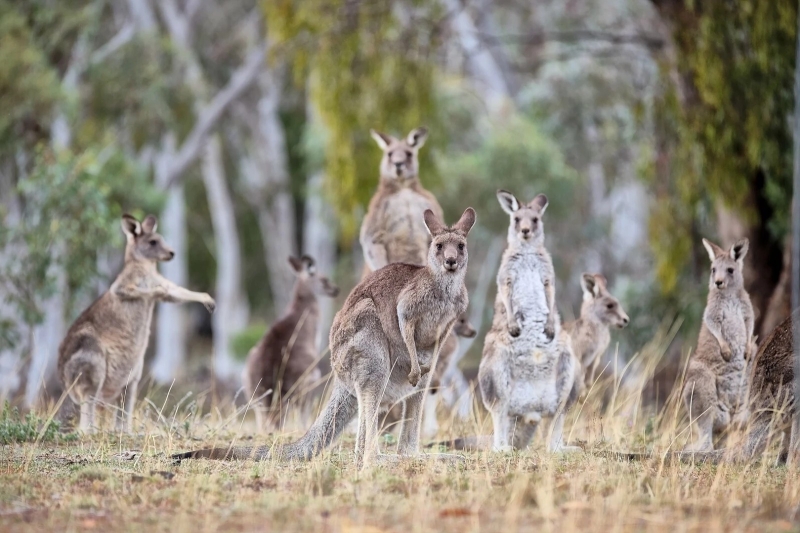Eastern grey kangaroo Macropus giganteus
Animals in our sanctuary
Dimitri (Male)

Dimitri, along with other animals, was illegally held by an individual. The animals were voluntary transferred to De Zonnegloed after an inspection by Animal Welfare Flanders, Belgium.
Where does he feel most at home?
The eastern grey kangaroo is most often encountered in Australia, due to its adaptability. They prefer open grassland with areas of bush for daytime shelter and mainly inhabits the wetter parts of Australia. They also inhabit coastal areas, woodlands, sub-tropical forests, mountain forests, and inland scrubs.
What's his favourite food?
The eastern grey kangaroo is predominantly a grazer, eating a wide variety of grasses.
Fun fact
The eastern grey kangaroo is the second largest and heaviest living marsupial and native land mammal in Australia. They have a powerful tail. Large males of this species are more heavily built and muscled than the lankier red kangaroo and can occasionally exceed normal dimensions.
The eastern grey is easy to recognise: its soft grey coat is distinctive, and it is usually found in moister, more fertile areas.
Like all kangaroos, it is mainly nocturnal and crepuscular, and is mostly seen early in the morning, or as the light starts to fade in the evening. In the middle of the day, kangaroos rest in the cover of the woodlands and eat there but then come out in the open to feed on the grasslands in large numbers.
Eastern grey kangaroos are gregarious and form open-membership groups. The groups contain an average of three individuals. Smaller groups join to graze in preferred foraging areas, and to rest in large groups around the middle of the day. They exist in a dominance hierarchy and the dominant individuals gain access to better sources of food and areas of shade. However, kangaroos are not territorial.
Eastern grey kangaroos are polygynous which means that one male mates with multiple females. Males do a lot of intraspecific competition for mates which includes male-male fights to determine dominance between the two males.
The female eastern grey kangaroo is usually permanently pregnant except on the day she gives birth; however, she has the ability to freeze the development of an embryo until the previous joey is able to leave the pouch. This is known as embryonic diapause, and will occur in times of drought and in areas with poor food sources.
Conservation
There are nearly 2 million eastern gray kangaroos in Australia and therefore the species is not threatened with extinction. In the late 1990s there was a sharp decline in the population of eastern Gray kangaroos, especially in Tasmania. These kangaroos are now legally protected by the Australian government with most of their range on private land. Since then, the population of the eastern Gray kangaroo has steadily increased.
Adopt this eastern grey kangaroo



